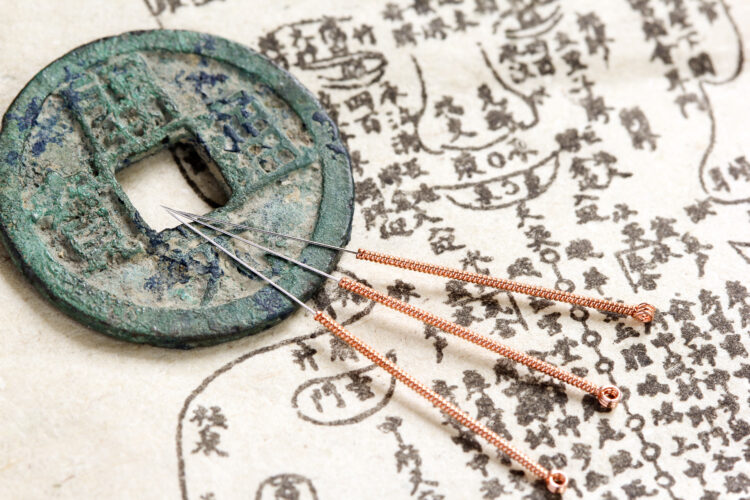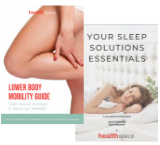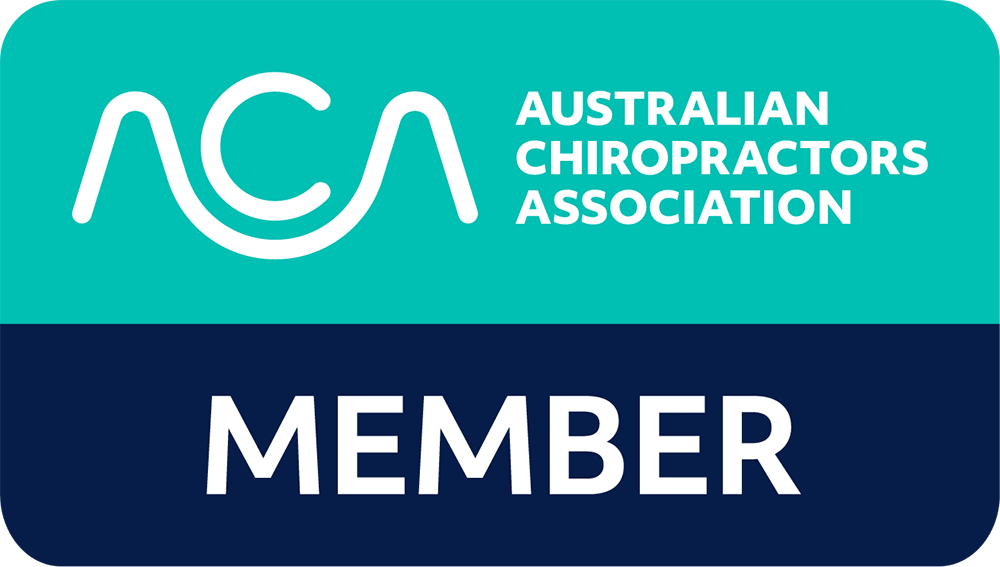
Eyes darting left and right. Your neck sore from constantly looking over your shoulders, chasing the shadow of pedestrians going about their business. Agitated. Sensitive. Wanting to hole up in a secluded dark corner at your workplace.
Maybe its not as bad as the description above. Maybe it is. If it is, I recommend that you consult some medical help immediately. If it is not so bad, but you are still experiencing anxiety and depression from daily life, work or perhaps as a result of the global pandemic, you are at the right place! Acupuncture and Chinese herbal medicine are novel approaches to better managing mental health that has been getting traction in the last decade.
The safety and effects of acupuncture on anxiety and depression have been discussed in our previous blog. This blog will show you some of the common acupuncture points where you can self-administer acupressure at your own convenience.
Australians are stressed!
In 2019, according to the Australian Institute of Health and Welfare (AIHW), approximately 14% of Australians experienced anxiety2. As a result of the global pandemic, by April 2020, up to 50% of Australians were experiencing anxiety and 61% of Australians were experiencing depression6. Approximately 20-30% of anxiety and depression cases were estimated to be of moderate to severe in severity4. Moreover, approximately 7.2 million services were subsidized through Medicare in the six months between March and September 20202.
What does google say?
Knowing that many Australians are anxious and depressed, how do you determine if this is you? Ask Google (definition from Oxford Languages)! Anxiety is a feeling of worry, nervousness, or unease about something or strong concern for something to happen. Depression is a severe feeling of dejection. If the terms above describe you, read on!
A review of acupuncture
Acupuncture uses thin, 0.18-0.25mm stainless steel, single-use, filiform needles on specific parts of the body to influence the movement of qi and blood in the body. The experience is mostly described as gentle and comfortable and rarely painful, especially for points used in anxiety and depression.
Acupuncture is safe! Some studies suggesting acupuncture causes less adverse events than standard antidepressants5. Adverse events are usually mild and limited to mild headache, spot bruising and skin irritation. Adverse events are estimated to be around 0.5 incidents per 10,000 people7. On the other hand, up to 86% of participants in a world-wide survey reported feelings of relaxation after acupuncture3.
An Australian study reported acupuncture was more beneficial than no treatment and even better results were found when combined with standard care1. These promising results are shared by other emerging research5,7.
Let’s Acupressure!
Self-administering acupuncture is not recommended and in Australia, practicing acupuncture is registered under Australian Health Practitioner Registration Agency. However, without using acupuncture needles, pressure can be applied at the acupuncture points (acupressure) for some measure of benefit. In fact, one of the most common principle of acupressure in use is are the sea-bands used to help relieve nausea and motion sickness.
Here are some acupressure points you can use at home or at work:
1. Pericardium 6: Nei Guan
Translated as the ‘Inner Gate’, this point is one of the most common points used to calm the mind or the shen. Clinical uses can vary between nausea, motion sickness, insomnia, anxiety, depression.
Location: on the inner side of the forearm, with the palm facing towards you. In the midline of the forearm about 3 finger lengths towards the elbow from the wrist crease, between the tendons.
Press down gently (don’t push to pain!) with the ball of the thumb for 30 seconds to 1 minute. Repeat 2-3 times up to 3 times a day.
2. Large Intestine 4: He Gu
Translated as the ‘Joining Valley’, this point is also known as the command point of the head and the face. This point is not specifically for calming the shen but is used for directing the qi and blood to the head and clearing the head.
Location: with the hand positioned with the thumb facing forward, the highest point of the muscle belly when the thumb is brought next to the second (index) finger.
Press down gently with the ball of the thumb until you feel a slight discomfort under your thumb. Hold for 30 seconds to 1 minute and repeat 2-3 times up to 3 times a day.
3. Si Shen Cong: extra point
Translated as the ‘Four Alert Spirits’, this point is located on the top of the head, acting directly on the conditions of the head and calming the shen. As the name suggests, this point is a combination of 4 points surrounding another common point used for calming the shen, called Du-20: Bai Hui (Hundred Meeting Points).
Location: on the midline, apex of the head, on the scalp (in line with the tips of the ears when folded forward).
To apply acupressure on this point, use the balls of the four fingers on each hand (index to the pinky) and apply pressure around the apex of the head at a 45o angle (so the front, back, left and right of the apex is covered). Apply pressure for 5 seconds 3-5 times up to 3 times a day.
Heed caution!
The above-mentioned points are common points used in acupuncture and quite safe. They are also easy to locate and self-apply acupressure. However, caution must also be taken. Firstly, do not apply pressure to the point of pain. You might feel a slight discomfort (eg. LI4: He Gu) but do not try to endure into pain as this can be harmful. Secondly, use the balls of the fingers to apply pressure and make sure you are not using your nails as this can damage your skin.
Talk to us!
Acupressure can be a safe and easy to apply tool to help you manage your anxiety and depression at the convenience of your home or work. If you have any questions or would like to find out more, we would love to talk to you. Daniel is an acupuncturist at Healthspace Kingsford who has a keen interest in using acupuncture to help better manage the mental health in the community.
References
- Armour, M., Smith, C. A., Wang, L. Q., Naidoo, D., Yang, G. Y., MacPherson, H., Lee, M. S., & Hay, P. (2019). Acupuncture for depression: A systematic review and meta-analysis. Journal of Clinical Medicine, 8(8), 1140. DOI: 3390/jcm8081140
- Australian Institute of Health and Welfare. (2020). Mental health services in Australia.Retrieved from https://www.aihw.gov.au/reports/mental-health-services/mental-health-services-in-australia
- Ernst, E., & White, A. R. (2001). Prospective studies of the safety of acupuncture: a systematic review. The American journal of medicine, 110(6), 481-485.
- Fisher, J. R., Tran, T. D., Hammargerg, K., Sastry, J., Nguyen, H., Rowe, H., Popplestone, S., Stoker, R., Stubber, C., & Kirkman, M. (2020). Mental health of people in Australia in the first month of COVID-19 restrictions: a national survey. The Medical Journal of Australia, 1. Retrieved from: https://www.mja.com.au/journal/2020/mental-health-people-australia-first-month-covid-19-restrictions-national-survey
- Li, M., Niu, J., Yan, P., Yao, L., He, W., Wang, M., Li, H., Cao, L., Li, X., Shi, X., Liu, X., & Yang, K. (2020). The effectiveness and safety of acupuncture for depression: An overview of meta-analyses. Complementary Therapies in Medicine, 50, 102202. DOI:10.1016/j.ctim.2019.102202
- Newby, J., O’Moore, K., Tang, S., Christensen, H., & Faasse, K. (2020). Acute mental health responses during the COVID-19 pandemic in Australia. medRxiv.DOI: 1371/journal.pone.0236562
- Xiao, X., Zhang, J., Jin, Y., Wang, Y., & Zhang, Q. (2020). Effectiveness and Safety of Acupuncture for Perimenopausal Depression: A Systematic Review and Meta-Analysis of Randomized Controlled Trials. Evidence-Based Complementary and Alternative Medicine, 2020.

